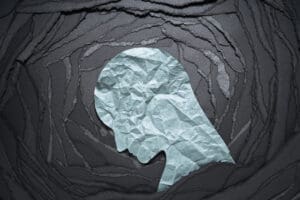
[Adobe Stock]
Phase 2b data from MindMed’s LSD-based therapy adds to the mounting evidence that psychedelic-assisted therapies could treat mental health conditions like anxiety, depression and PTSD.
In particular, the study found statistically significant dose-dependent improvements in the Hamilton Anxiety rating scale (HAM-A) at the 100 and 200 μg dose levels in the four-week study. Similarly, recent phase 2 Cybin data found 79% remission for depression after two doses of its psilocybin-based therapy. And MAPS filed for MDMA approval in PTSD based on phase 3 results.
But MindMed’s study was unique in its evaluation of MM-120 as a standalone single-dose oral medication without psychotherapy. The compound, an LSD tartrate formulation, showed clinically and statistically significant reductions in anxiety symptoms over four weeks when given as a single monotherapy dose in patients with generalized anxiety disorder (GAD). The study did not provide any preparation, psychotherapy or integration.
Robert Barrow, CEO of MindMed, believes the data could pave the way for the therapeutic delivery of its therapy with “greater scalability.” If further data aligns with the Phase 2b study, “we can just administer the drug on a standalone basis,” Barrow said in a call with analysts. “That, of course, opens the door to a much wider range of delivery settings and modes.”
The prospect of integrating LSD into the mainstream
That’s not to say that LSD, a psychedelic that is typically psychoactive for 8 to 12 hours, is likely to pop up in pharmacies in the near future, if it wins FDA approval. A more likely scenario is that the FDA would constrain its use in a Risk Evaluation and Mitigation Strategies (REMS) program. Here, Johnson & Johnson’s Spravato (esketamine) may serve as the nearest reference point. Although a nasal spray, Spravato is administered in clinical settings with patient monitoring of about two hours. The treatment frequency varies depending on the treatment stage. During the first four weeks of treatment, patients typically receive two doses per week. Dosing drops to once weekly during weeks 5-8, and then every two weeks or once weekly from week 9 onwards.

Recipients of larger doses of MM-120 saw significant reductions in HAM-A scores. [MindMed]
Demand for Spravato was initially limited, but its use has grown as corresponding infrastructure for it has. In the U.S. and worldwide, 2Q year-over-year Spravato revenues were up 93.2% and 98.5%, respectively.
“There is this existing and growing infrastructure for the delivery of Spravato currently,” said Dr. Daniel Karlin, chief medical officer of MindMed. “The increasing third-party payer reimbursement and ease of getting that reimbursement has spurred the growth of these third-party payers supported interventional psychiatry centers that may deliver Spravato and other interventional psychiatry treatments,” Karlin added, referring to therapies such as transcranial magnetic stimulation (TMS). “We very much see those as potential commercialization clinics for the delivery of MM-120,” he added.
MM-120 shows favorable safety profile
And while the compound can sometimes elicit challenging experiences, LSD has a relatively sound safety profile from a toxicology point of view when administered in a controlled setting. Karlin further underscored MM-120’s safety profile as a point of differentiation over the ketamine therapy Spravato. “Because there’s such a low physiological burden from MM-120, unlike Spravato, which requires medically certified sites and a degree of physiological monitoring, we don’t see that sort of physiological risk with MM-120,” Karlin said. Spravato, for instance, can cause transient increases in blood pressure.
In the Phase 2b trial, MM-120 resulted in mostly transient mild-to-moderate adverse events, and approximately 90% of participants completed the 4-week trial, with 97.5% completion in the higher dose groups.
In the study, the 100 μg dose also had an efficacy edge over 200 μg dose. The higher dose has historically been linked to “perhaps some more challenging experiences” that “may mitigate some of the positive experience during the study.”
Indeed, psychedelics’ potential to elicit “bad trips” has been routinely documented in recreational settings and, more recently, in clinical trials. A phase 2b treatment-resistant depression (TRD) study from Compass Pathways found suicidal ideation and intentional self-injury in psilocybin recipients, but the company stressed that those behaviors are common in TRD studies.
MindMed saw no incidents of suicidal or self-injurious behavior in its Phase 2b study.
In any case, other organizations such as Delix and the University of North Carolina and collaborators are looking to psychedelics for inspiration to create safer non-hallucinogenic compounds to treat mood disorders that could integrate more readily into more conventional healthcare frameworks.
Flexible administration settings possible
While MM-120 could potentially be administered as a standalone therapy, its integration into various clinical settings is another possibility. “We actually can project out into a commercial world where MM-120 is not only administered in interventional psychiatry centers but also in places where psychotherapy is delivered,” Karlin said. “The requirements for monitoring someone undergoing MM-120 treatments aren’t really different from what’s required to deliver interpersonal one-to-one psychotherapy, dyadic psychotherapy.’”
Potential for long-lasting effects
MindMed is upbeat that patients potentially receiving its therapy would see durable effects. “We lost no clinical response through four weeks of treatment,” Barrow said. He added that he expects a “flatlining of significantly reduced anxiety symptoms” for significantly longer. “We anticipate that there’s a good chance we’ll see that continue out to eight and 12 weeks,” he said.
The company is planning a phase 3 study, which is slated for the third quarter of 2024. It plans on releasing 12-week topline data for MM-120 in GAD in the first quarter of the year.

[MindMed]
MindMed also notes that it has an investigator-initiated study conducted and overseen by Professor Dr. Matthias Liechti, who oversees a psychedelics pharmacology and clinical research group at University Hospital Basel in Switzerland. That group found that LSD had “up to six months of activity,” Barrow said. “So we believe there’s significant upside in terms of how much longer this drug can show and perform in terms of its anxiolytic effect.”